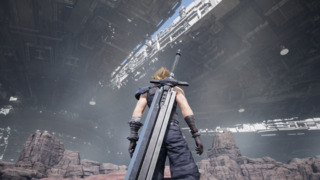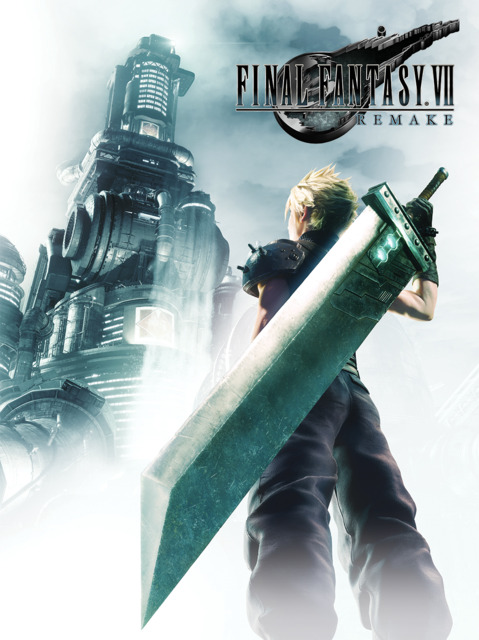What Final Fantasy VII Remake lacks in pacing it absolutely makes up for in character and style
Quick note: I've never played the original Final Fantasy VII, so this review is of my experience as a newcomer.

Among the many remakes that have graced the video game industry in recent years, Final Fantasy VII Remake stands as the most ambitious, a dramatic undertaking to reimagine the original 1997 title as an entire trilogy. Remake, therefore, is less a complete story and more of a fully-fledged kickstart to what will likely be quite a spectacular adventure, if the high points of this game are any indication. Over the course of the 33 hours it took to complete the main game and the post-game episode INTERmission, Remake served up a decent story made all the better by some beautiful cutscene direction and wonderfully charming characters. It’s outside of the main narrative that things slip a bit; the combat is frequently dazzling, but the game’s lack of interesting side quests and some dull level design often had me wishing I could skip to the next major story beat.
These story beats are frequently great in large part because of the strength of the main cast. They’re a diverse group of fighters trying to dismantle Shinra, a sort of corpo-government which has built its success on the completely unrestrained exploitation of the planet’s energy. The city of Midgar is effectively the domain of Shinra, and the class divide within its borders is made awfully explicit by a tiered city layout that sees the well-to-dos living on massive plates suspended above a ring of slums.

Everyone involved brings so much to the adventure. The physical prowess of resistance leader Barret is matched by his boisterous commitment to the cause. An unshakable devotion to the planet forms the core of his being, whether he’s shouting about the world’s suffering or coming to terms with someone’s death—they haven’t died, they’ve “returned to the planet.” There’s Tifa, the more grounded member of the team, who is often disturbed by the ramifications of their rebellion and the brutal retaliation from Shinra that follows, but will nonetheless deliver some of the most devastating punches and kicks you’re likely to see outside of Persona 4’s Chie Satonaka. For me the centerpiece of Remake is probably Aerith, whose grace and heartwarming interactions with everyone—particularly with protagonist Cloud Strife—made her an instant favorite. There are some great folks on the periphery too. Three other members of the Avalanche resistance group—Biggs, Jessie, and Wedge—get a lot less screen time than the main cast but still feel important to the story because of how much of an impact their presence has.
Seeing these characters navigate their world is a treat, whether its finding comfort in friends and family amidst the slums they call home, or infiltrating a high-end Shinra HQ far above on the upper plates where life is significantly less destitute. Chapter 9 in particular includes a sequence of events so sensational that if I were to rank my favorite moments in games in the last ten years, it’s likely that it would earn a spot on that list.
Part of why these moments are successful is because of how elegantly shot the cutscenes are; nearly two dozen times I paused these to take a screenshot, but there were just as many times where I wasn’t nearly fast enough to get the capture I wanted. This extends to the game’s backdrops too—I was always in awe at the scale of Midgar any time I stared up at the plates, or down at the slums as they case may be. Combat is a joy to witness as well, most notably with its abundant particle effects and flashy explosions. But I also really enjoyed the animations; Barret bracing himself as he fires his massive machine gun, Tifa unleashing rapid fire combos of kicks and punches, Aerith’s long ponytail and dress fluttering as she wields the forces of nature with her staff—all of these details compliment the characters beautifully.

I haven’t mentioned Cloud, though it’s not out of disregard. Cody Christian’s performance really sells the cold disconnect that Cloud feels as a mercenary with no particular attachment to Avalanche’s cause, and seeing those barriers melt away as he begins to find a purpose is just one of the story’s compelling arcs. Slightly less compelling is the visions he experiences periodically of Sephiroth, who only really exists to haunt him in these moments. Frustratingly, these visions never become clearer even by the end of the game; Sephiroth feels otherworldly and imposing, I suppose, but the mystery started to feel a bit tedious by the twelfth occurrence.
The other half of the Remake experience, the part where you actually run around and play it, is a bit of a two-sided affair. For one, the game’s combat is often electrifying, whether it’s against everyday foes or an imposing boss, and it’s made all the better by some outstanding music that heightens the thrill of these fights. Combat plays out in real-time and at any moment you can slow things down to issue commands to your party members. You can also directly control any of them at any point, seamlessly switching on the fly. This makes the fighting feel really dynamic, and indeed some of the tougher fights require a bit of tactical party management to survive. Unfortunately, some of this management too often feels forced as a result of some weirdly inactive AI. I noticed on several occasions that my party members would stand around during fights, playing almost entirely defensively when it wasn’t necessary. This forced me to take control of them because when they aren’t attacking they aren’t filling their ATB gauges, which is the energy required to cast spells and use items and skills. It’s also just frustrating to be in a boss fight and feel like you’re the only one chipping away at a health bar.
Remake’s combat is made surprisingly complex by the availability of several weapons per character, each with their own upgrade paths and unique skills, as well as the materia system. Materia are skills, spells, and passive abilities that get slotted into weapons and armor pieces, and most of them are capable of leveling up with use and becoming more powerful. So many of these get collected over the course of the game that I eventually found the system to be a bit overwhelming and troublesome to manage. It becomes even more of a headache due to how frequently the game changes your party composition. The main cast is constantly weaving in and out of the story, and I found myself having to make materia adjustments every time that happened. At one point, when Barret rejoined the group after probably a dozen hours of being away, I had completely forgotten how to play him and resorted to using an online guide to rebuild his whole setup. It sometimes feels like the weapon and materia systems would fit better in a much larger game. But I was still impressed by how in-depth the character builds can get, even if I didn’t have much interest in exploring the possibilities myself.

Outside of combat, Remake often has you exploring towns around the slums and taking on side quests. Unfortunately, I didn’t find any of these side quests to be worth doing. My completionist tendencies had me stick with them for a while, but the game makes a mistake very late in the story when it dumps nine more of them on you. This instance is part of a larger issue with the game’s pacing, which can feel a bit languid at times when it has you trudging through uninspired dungeons, like a dreadfully dull sewer section that it makes you play through twice for no good reason. Why do we still visit sewers in games? Another dungeon has Cloud manipulating large mechanical arms to create platforms for Aerith to walk across, and it just goes on for too long. And one other section that involves splitting into two groups and opening pathways for each other is easily the most mind-numbing portion of the entire game. These bits feel more like busywork than anything additive to the adventure, and I think the game would move along at a much better pace without this sort of filler.
It speaks to the strengths of Remake’s main narrative though that I always found it worthwhile to push through these moments. Even as it overstayed its welcome the cast remained so wonderfully likable, its combat so dynamic and engaging, that it was easy to look forward to whatever was coming next. Remake has made me enamored with these characters, and I’m already eager to see where they go now.
A note on the DLC: Remake’s INTERmission DLC is entirely separate from the main game, so it didn’t quite fit snuggly into any part of this review. The story of the DLC wasn’t particularly remarkable to me, but it did have some of the best combat in the entire package. Protagonist Yuffie is easily the most exciting character in the game to play as, since she can dynamically switch between ranged and close-quarters attacks. She’s also able to apply various elemental effects on the fly. She basically feels like an entire party wrapped up into one character, and it’s completely awesome.

